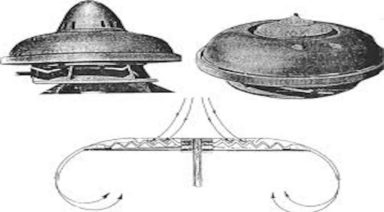6 Corporations Control Most Scientific Publications

AN OLIGOPOLY OF 6 CORPORATIONS OWN THE MEDIA AND CONTROLS THE MAJORITY OF ALL SCIENTIFIC RESEARCH PUBLISHED IN THE WORLD AND IT IS AFFECTING THE WAY SCIENTISTS CHOOSE WHAT TO STUDY.
The world of scientific academia is incredibly competitive, with high standards that supposedly lead to better research and greater discoveries. Getting published in a reputable journal is the desired goal for an aspiring scientist – a benchmark for anyone wanting to make a name for themselves. With funding for that research often coming from universities or government grants and peer review being voluntary, the system can appear to be ostensibly immune from corporate interests and the typical symptoms of capitalistic greed.
At one point in time this might have been the case. But today, 6 corporations own the media and control the majority of scientific journals and they have created a multibillion dollar oligopoly, controlling the flow of what scientists choose to study and charging the very people who fund the research, to see the results.
John Perkins on Corporatocracy
WHO ARE THE 6 CORPORATIONS WHO OWN THE MEDIA?
The six corporations that own the media — also known colloquially as “the Big 6” — are:
- GE
- Disney
- Time Warner
- Viacom
- CBS
- News Corp
These corporations control as much as 90 percent of all the media in the United States. Consequently, this creates a sort of echo chamber in the media world, from television to radio to news.
A Paradigm Shift in Publishing
It was once the case that scientific papers were published in whichever journal was the most fitting. All research and its implications became part of a collective body of scientific work with relatively equal importance. But a shift occurred when a scientific journal out of MIT, called Cell, started a trend in publishing scientific research that told a broader story. Importance was placed on showing the implications of the research as part of a greater picture and therefore bigger, more profound discoveries were given greater value, while the more mundane research was deemed not as exciting.
This competitive nature has created a system in which scientists feel the need to publish groundbreaking stories, in the most prestigious journals to be considered relevant. And this is essentially the only significant value in publishing with one of the big six corporations– clout. Despite their exorbitant profits, these publishers don’t provide much in the way of standards or scrutiny in the peer-review process. In fact, there have been numerous instances of research with shoddy methods and inaccurate results that have been published in some of the more astute journals. Instead of investing in carefully vetted, quality research, their M.O. is quantity. In fact, there have been scientists who have intentionally submitted phony research to see if it could pass the peer-review process, and it often worked.

Despite the fact that the internet has made publishing easier and more efficient, it has only increased big publishers’ profits. While one might assume that the cost for access to scientific publications would decrease, due to the physical cost of printing going down, the opposite has instead become the case. At the same time, these publishers have significantly increased their market share of all scientific publications, buying up various journals and bundling lesser publications with high-demand publications.
A Cyclical Profit Scheme
This system that has lined the pockets of the six corporations who own the media is cyclical and should essentially be considered theft. Scientific research is generally government funded or bankrolled by universities. Their subsequent research is then given to a publisher in hopes of it actually being published. The peer-review process is done by volunteer scientists and then publishers sell the work back to universities of scientists and researchers where the work essentially originated. The product that these publishers are selling is basically being created by their customers at little to no cost to them. And once an article is submitted and accepted to a journal its content is essentially owned by that journal – scientists are not allowed to submit their work to multiple journals.
The one publisher of the big six that has reaped the most profit is Reed-Elsevier. One study found that during the 90s, in the midst of the rise of the internet and a period of massive consolidation in publishing, Reed-Elsevier’s revenue doubled, while its profit margin rose almost 10%. By 2013, the company’s profits reached $2 billion and it now controls more than 28% of the market. The total global revenue today for the entirety of the scientific publishing industry is $19 billion, and the top 6 publishers increasingly control the majority of it.

Unsurprisingly, as the profits of the corporations have risen, so has the cost of accessing their publications. Individual studies can cost hundreds of dollars, while subscription prices for individual publications can cost thousands of dollars. At one point Elsevier increased their subscription fees by 30% over five years. This system is unsustainable even for universities that pay millions of dollars a year to allow students access to this research, while also funding the research itself. Between 1986 and 2004, universities have seen a 273% increase in the amount of money being paid for subscriptions.
What is the Solution?
This issue is part of a greater, systemic problem in both the scientific and economic world. But without an anti-trust lawsuit or comprehensive government regulation, how can we solve this issue? Some have resorted to piracy, while others see a more pressing need for reform in the peer-review process.
Some countries have enacted policies to combat the extortion of big publishers, like denying them the ability to charge for both publishing fees and subscription access. One solution that has laid the groundwork for reform, is the Public Library of Science, or PLOS. This online science library has created an open access forum for scientific research and is gaining significant traction. It has become a de facto leader in the push against the big publishers and heavier government regulation in scientific publishing.
Originally relying on donations from foundations, the company now charges a publishing fee from the author or their funder, allowing open access to anyone who wants to read it. PLOS allows for post-publication peer review, which allows for the scientific community to accept or reject research, rather than a sometimes-ambiguous peer review process before publication. PLOS’s new model has been referred to as an open access megajournal, and unsurprisingly it was recently surpassed in size by a competitive model owned by one of the big six publishers.
But the pushback from Springer’s megajournal, Scientific Reports, looks like it could be detrimental to the success of PLOS. The megajournal is doubling its output of published articles while also improving the measured quality of its articles. Meanwhile, PLOS has seen its number of published articles decline and has a lower quality rating than Scientific Reports.
Is this a sustainable model for reforming the publishing process and allowing public access to scientific research? Or will large multinational corporations maintain their grip on humanity’s collective knowledge?
True Corporate Citizenship
Gaia's Top 10 Seeking Truth Shows You Don't Want to Miss

You know there’s more than what we’ve been told by the government, media, and society’s dominant narrative; a clandestine cabal of the ruling elite, alternative historical narratives, an undisclosed extraterrestrial presence, and esoteric pathways to higher states of consciousness. Here are some of our latest picks to give you fresh insight into your quest to seek the truth.
1. Disclosure with Dr. Steven Greer
In conversations with Billy Carson, Dr. Steven Greer discusses the history of the UFO and Disclosure movements, as well as his personal experiences leading to his development of the CE5 (Close Encounters of the 5th Kind) protocols, a groundbreaking process that leverages advanced consciousness techniques to facilitate unmitigated human contact with ETs.
We explore Dr. Greer’s research into consciousness and technology as he shares his inspirational vision of our future as members of an intergalactic civilization.




































